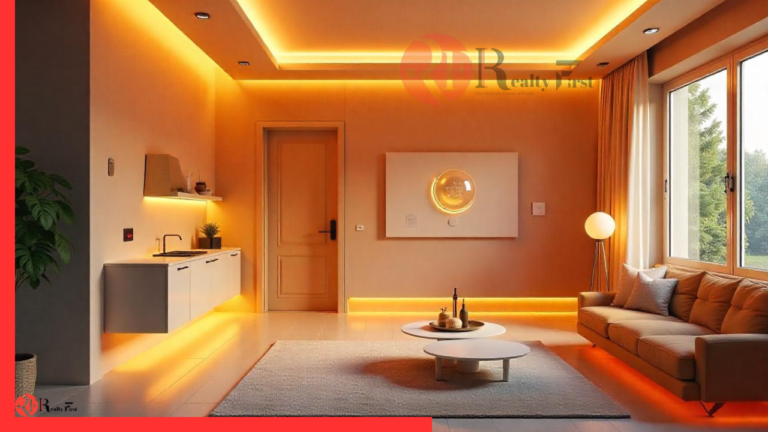By- Dr Anil Pillai (Director, Terragni Consulting)
When we think of architecture, the first images that often come to mind are iconic skylines, sleek facades, or innovative materials. But architecture isn’t just about what meets the eye. At its core, it’s about creating spaces where people live, work, and thrive. It’s about us. And this is where behavioural science becomes the unsung hero, quietly shaping how inclusive—and human—our spaces can be.
Designing for Real Humans, Not Ideal Ones
Let’s face it: we humans are delightfully imperfect. We jaywalk across streets, hesitate at complex intersections, and instinctively avoid overly crowded areas. Despite our quirks, traditional infrastructure often assumes we’re perfectly rational beings moving in straight lines. Behavioural science flips this assumption on its head, using our natural tendencies as the starting point for better design.
Take the example of urban footpaths. Ever noticed those muddied, worn-out dirt trails across parks or open spaces? They’re called “desire paths”—the routes people naturally carve out because they’re the most convenient, because they cause the least friction. The desire path isn’t the result of some grand urban plan; it’s simply people taking the shortest route, avoiding obstacles, or seeking a more pleasant path. Copenhagen, often hailed as the gold standard of urban design, has used such informal trails to inform permanent walkways. Instead of dismissing these spontaneous routes as ‘improper,’ the city embraced them and incorporated them into its official planning. This is what happens when we stop assuming how people should behave and start designing with the understanding of how they actually behave. It’s not just designed by humans; it’s designed for humans.
Beyond Ramps and Rails
Inclusive infrastructure is more than adding ramps or installing wider doorways. While these are essential, true inclusivity digs deeper. It’s about understanding how people experience spaces—both physically and emotionally—and designing with empathy. It’s about asking not just, “How can we accommodate different abilities?” but also, “How can we make people feel welcomed, understood, and supported?”
Let me share an example from Stockholm. Subway stations are usually noisy, chaotic spaces, and navigating them is particularly challenging for visually impaired commuters. By studying their behaviour, designers learned that soundscapes—like the echo of footsteps or the pitch of train sounds—play a critical role in orientation. The solution? Audible landmarks. These include different floor textures and subtle sound cues that guide commuters with visual impairments. It’s simple, thoughtful, and truly inclusive. By understanding the emotional impact of disorientation and fear, designers crafted a solution that was both functional and empathetic. It’s an example of architecture that listens, rather than imposes.
Closer home, semiotics (the study of signs and symbols and their use or interpretation) plays a huge role for much of our population, and our hospitals have embraced behavioural insights to address navigation challenges. Imagine stepping into a labyrinthine hospital for the first time. It’s overwhelming, especially if you don’t speak the local language or cannot formally read/write. By using colour-coded paths and pictorial signs, hospitals not only have reduced confusion but also ensured that first-time visitors—patients and families—felt supported. That’s inclusion in action. In spaces designed with care, people don’t just find their way—they feel seen, respected, and understood.
And yet, as far as we’ve come, there’s still much to be done. For every well-intentioned design solution, there’s room for improvement. Inclusivity isn’t a one-size-fits-all process. The needs of people change, and they need to be continuously observed and understood to ensure our spaces evolve along with them. It’s an ongoing challenge—and a never-ending opportunity for innovation.
When Design Nudges Us
Behavioural science doesn’t just respond to what people do—it gently nudges them toward better outcomes. The real brilliance of architecture isn’t only in making spaces accessible but also in steering people toward healthier, safer, or more sustainable behaviours without them even noticing. Take airports, for instance. Singapore’s Changi Airport is a masterclass in inclusive design. Instead of rigid rows of seating, you’ll find garden spaces, water features, and open, stress-free layouts. These aren’t just aesthetic choices; they’re carefully designed to reduce the stress and cognitive overload of navigating a busy airport. What’s the result? People feel more relaxed, and as a result, they’re more likely to follow airport procedures calmly and efficiently. It’s a subtle nudge toward a smoother journey, where the space itself is the quiet guide.
Even lighting, when designed with behavioural science in mind, can be transformative. Studies show older adults are more likely to misjudge steps in dim lighting, leading to accidents. Adaptive lighting systems that adjust brightness based on natural light aren’t just functional—they make spaces safer and more welcoming for everyone. It’s not about fancy, complicated tech; it’s about tuning into human needs and using simplicity to drive better outcomes. Imagine a public library where light levels are carefully regulated to reduce eye strain, or a shopping mall where lighting intuitively guides your steps toward the most popular stores. That’s behavioural design in action.
The Future of Inclusive Design
As designers and architects, the challenge isn’t just to create spaces that look impressive but to craft environments that feel intuitive and welcoming for everyone. Behavioural science provides a framework to anticipate and address human needs—spoken and unspoken—and embed empathy into every decision. In fact, inclusivity in design shouldn’t be the exception; it should be the norm. It’s about creating spaces that aren’t just built to accommodate—but spaces that actively embrace the diversity of human experience.
The next time you walk into a space that just works, where you feel a sense of ease and belonging, remember: it’s no accident. It’s behavioural science at play, shaping the invisible threads that connect people to spaces. Behind every seamless transition from one area to another, every unspoken understanding of what to do next, there’s a design decision rooted in human psychology. Whether it’s a hospital that helps you navigate your stress, a train station that makes you feel safe, or an airport that calms your nerves, these environments are engineered to make people feel human.
Because in the end, great design isn’t about buildings. It’s about people. And making the world feel just a little more human. Isn’t that the true art of architecture?













